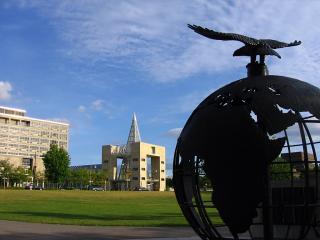Today’s Ottawa Citizen has an article about how the Canadian War Museum is being pressured to change some of the text in its Bomber Command exhibit. Veterans had complained that it makes them out to be war criminals. The text reads:
“The value and morality of the strategic bomber offensive against Germany remains bitterly contested. Bomber Command’s aim was to crush civilian morale and force Germany to surrender by destroying its cities and industrial installations. Although Bomber Command and American attacks left 600,000 Germans dead and more than five million homeless, the raids resulted in only small reductions of German war production until late in the war.”
The museum consulted four contemporary historians, after complaints from the National Council of Veteran Associations, and they each affirmed the accuracy of the text. Two of them, however, lodged some complaint about the tone employed.
All this strikes at one of the tough moral questions that arises when you treat war as the subject of law. If the London Blitz was a crime, surely the bombing of Berlin, Tokyo, and Nagasaki were crimes as well. The targeting of civilians was a crime committed by those who chose where the planes should drop their deadly cargo. The dropping of the bombs was a crime committed by those who followed the illegal orders. (See: this related post) Alternatively, one can adopt the view that none of these undertakings were criminal. I suspect that neither perspective is a very comfortable one for those who were involved, but it seems difficult to come up with something both different and defensible.
In the end, it seems wrong to give anyone the comfort of thinking they were on the ‘right’ side and this somehow excused what they did. Their actions are equally valid objects of moral scrutiny to those of their opponents, though they are much less likely in practice to be thus evaluated.
None of this is to say that all the combatant states in the Second World War had equally good reason to get involved, nor that there is moral equivalence between the governmental types in the different states. What is hard to accomplish, however, is the translation of such high level concerns into cogent explanations for why former Canadian strategic bombers should be honoured while Germans launching V2’s into London should not be. The generally unacceptable character of the intentional bombing of civilians is firmly entrenched in international law; as such, the sensibilities of current veterans do not warrant changing the text.
[Update: 30 August 2007] Randall Hansen, an associate professor at the University of Toronto, has written a well-argued editorial in the Ottawa Citizen attacking the museum’s decision to change the wording.





